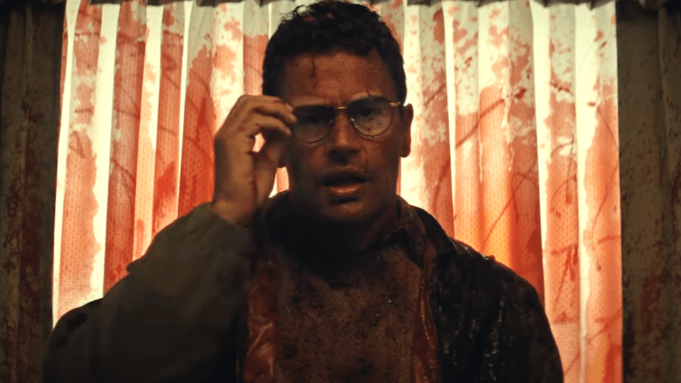In a movie landscape where the horror never stops, “Longlegs,” released last summer, was able to make more than the usual boo!-and-then-forgotten-in-a-week impact. It was a serial-killer mystery with a suavely creepy atmosphere and a showpiece performance by Nicolas Cage, who camped it up under long hair and pounds of makeup as an androgynous ringmaster sicko who reminded me of no one so much as the character of Witchiepoo from “H.R. Pufnstuf.”
“Longlegs” established its writer-director, Osgood Perkins (the 50-year-old son of Anthony Perkins), as a force in horror. Yet I wasn’t as wild about the movie as a lot of people were. It was most effective when the fear gathered around Cage’s performance. But as the mystery revealed itself, it turned out that we were watching an overcooked supernatural occult evil-doll movie. It was clear that Osgood Perkins had talent, and that he was influenced by choice sources (like “Manhunter”), but “Longlegs,” much as I liked it for a while, was a tease of a mood piece overlaid with tricks and gimmicks.
So I was eager to see Perkins’ follow-up film, hoping that it would make good on what worked in “Longlegs.” But “The Monkey,” which Perkins adapted from a 1980 short story by Stephen King, doesn’t build on the earlier film’s promise. On the contrary, it’s a ham-handed, lurchingly obvious mess, without the glimmer of human interest that even a sensationalist horror film needs. The tone Perkins adopts this time isn’t creepy-subtle; it’s bluntly snarky and misanthropic and in-your-face. Yet there isn’t enough going on in the film to sustain that. “The Monkey” is a belabored circus of showpiece homicide built around a way-too-cartoonish-to-be-convincing tale of twin brothers who hate each other. I’m not sure which aspect of the movie I liked less.
In the opening scene, which sets the tone (broad, antic, grotesque, badly lit), an airline pilot (Adam Scott), his cap and uniform streaked with blood, enters a pawn shop with a wind-up-doll monkey he wants to sell. In King’s original story, the monkey was one of those eight-inch-high ’60s novelty toys you would crank with a turnkey in the back, which made it jerk around and clap its cymbals. In the movie, the monkey is a two-foot-tall sculpted plastic model whose arms bang up and down on a drum, as his mouth opens up to bare its teeth in a violent grimace. This monkey looks like a monster, which only makes what happens all the more obvious.
The second the monkey’s right paw smashes down with its drumstick, it means that someone is about to die in a most flamboyant way. (There’s just one rule: Whoever turns the monkey’s key won’t be the victim.) In the pawn shop, that turns out to be the clerk. A rat running along the shelf knocks over an object that unleashes a spear that fires right into the clerk’s abdomen. The spear then flies out backwards, dragging out all 20 feet of his small intestine as if it were a taut bloody clothesline. Booyah!
I have no problem with movies that serve up gruesomely imaginative sick-joke deaths as a form of operatic slasher pageantry. The first film I can remember doing that was “The Omen,” back in 1976. It was thought of at the time as a “serious” horror film about the devil walking among us, but really, it was all about those Grand Guignol deaths. With Sam Raimi’s “The Evil Dead,” in 1981, this sort of thing now became lavishly tongue-in-cheek, a spirit that Peter Jackson picked up on when he made “Dead Alive,” which was an orgy of slapstick body horror. The “Final Destination” film were popcorn rides of ritualized disaster, and the “Terrifier” films, featuring that harlequin from hell Art the Clown (the latest figure to rise to the Jason/Freddy/Leatherface level of iconic killer mascot), are deranged dioramas of surgical mayhem.
I’m a fan of all that stuff. “The Monkey,” however, doesn’t quite have the freakish what-the-hell spirit of any of those films. It’s trying, in its crude fashion, to tell a story, so each time the film stops dead in its tracks to serve up another ghoulish freak accident, you can feel the filmmaker nudging you in a gratuitous way, as if to say, “Look! Wasn’t that the most?” Yet the deaths aren’t actually all that outrageous — at least, given what we’ve seen in horror over the last 40 years. A babysitter gets decapitated by a Benihana-style chef. A bikini-clad swimmer gets spectacularly electrocuted in a motel pool, which sends her limbs flying. By the time a character named Uncle Chip (played by the director) is introduced, only to die by being trampled by a stampede of wild horses, it starts to feel like we’re watching the kill-by-numbers version of baroque calamity.
Love Film & TV?
Get your daily dose of everything happening in music, film and TV in Australia and abroad.
The two central characters, a mild bespectacled middle-school geek named Hal and his hateful abusive bully of a twin brother, Bill (both are played by Christian Convery), discover the monkey sealed away in a round box. It belonged to their late father, Capt. Petey Shelburn, the pilot from the opening scene. It takes them a while to figure out how the monkey works, and before they know what they’re doing, their mother has died of an aneurysm. That seals the antipathy between them. But the character of Bill, who’s like every bully in a John Hughes film rolled into one, is mired in one-dimensional toxicity. And so is the entire relationship.
King’s story was no masterpiece, but in its teasing allusion to the 1902 W.W. Jacobs horror short story
“The Monkey’s Paw,” with its musings on power and destiny, it was trying to be a moral fable. “The Monkey” is closer to a lurching slasher movie embedded in a fraternal soap opera that never hooks us.
After a while, the Shelburn brothers grow up. As adults, they’re both played by Theo James, an actor I’ve liked ever since the “Divergent” series (though I always have to spend a few moments adjusting to the fact that he’s not a missing Franco brother). James, with his doleful countenance, makes the adult Hal vaguely sympathetic. Hal has a son, Petey (Colin O’Brien), whom he sees once a year, and most of the rest of the film takes place during the week they’re spending together; Bill ultimately shows up, and he’s still a cad. The brothers have chained the monkey in its box and thrown it down a well, but of course they can’t get rid of it that easily. Its curse is metaphysical. The trouble is, it’s the movie that feels cursed, as Osgood Perkins lurches between splatter set pieces that winkingly telegraph their inhumanity and a story he then has the temerity to assume we’ll be invested in. There’s always an audience for name-brand horror, but don’t expect this one to have long legs.
From Variety US































